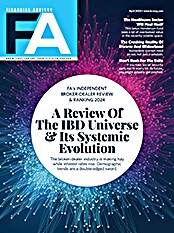We're in the middle of an investing environmental shift and that means investors will need to be positioned for that change.
For the past few decades, the primary focus of monetary policy makers has been to hold inflation in check, which has made government bonds an ideal investment for a world of falling interest rates and stable prices. But policy makers now see their primary task as staving off downturns and boosting growth and inflation. Central bankers have come out and said governments need to do more to stimulate growth with fiscal policy. The way to invest for unexpected bursts of fiscal stimulus might be assets that have largely been out of favor in recent years, such as value stocks of financial and non-U.S. companies, and perhaps commodities.
To think about investing in this new landscape, it's helpful to consider the origins of the old one. High inflation in the 1970s was crippling the U.S. economy and leading to social and political turmoil. Soaring prices for housing and high mortgage rates were squeezing the baby boom generation just as its members reached their prime years for forming households and families. As noted in the book "Great Expectations: America and the Baby Boom Generation," in 1970 half the people in the country could afford to buy the median-priced new home. By 1980 that percentage had fallen to 13%. To deliver economic prosperity for the boomers, inflation had to be reined in.
It took time but monetary policy evolved to accomplish that goal. Paul Volcker became the chairman of the Federal Reserve in 1979 and raised interest rates to crush inflation. A tax revolt in California led to the passage of Prop 13, limiting the growth of property taxes and acting as a constraint on state spending. Republicans began winning elections up and down the ballot by running on a small-government and low-tax agenda.
That shift, combined with the starting point for valuations in the early 1980s, made government bonds an ideal investment. At their peak in 1981, 30-year Treasuries yielded more than 15%. Within two years, inflation would fall below 5%, so bonds yielded significantly more than inflation. Over time, investors came to understand that the Fed was focused on fighting inflation, and was willing to create recessions to do so. In good times investors tended to earn a reasonable return on government bonds in excess of inflation, and in bad times bonds had significant capital appreciation as inflation and interest rates fell.
Owning bonds has worked out so well that in March, when stock markets were crashing, the return on 30-year government bonds had actually kept up with stocks over a 40-year period.
However, as we've seen during the past few years, but particularly this year, things are shifting in a different direction. Both Democrats and Republicans have become more comfortable downplaying budget deficits. Rhetoric is one thing, but we saw with the passage of the Cares Act in March that they meant it, with trillions of dollars of fiscal stimulus deployed to offset the economic damage from Covid-19. As a result, the recession that began in February may have ended after just two months. The White House has signaled that it still wants to see the passage of as much as $2 trillion in additional stimulus.








